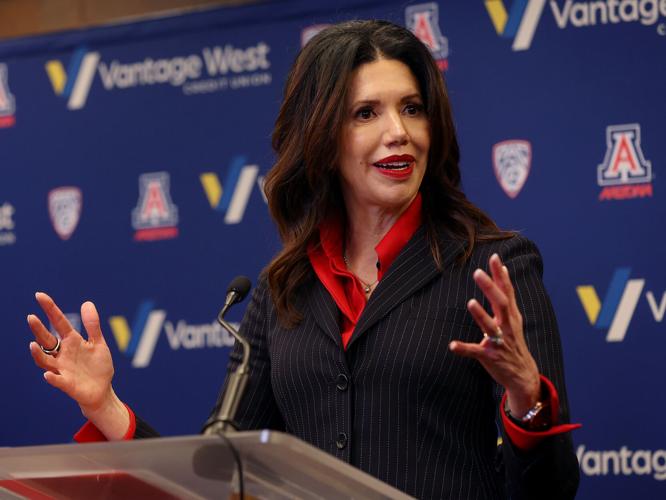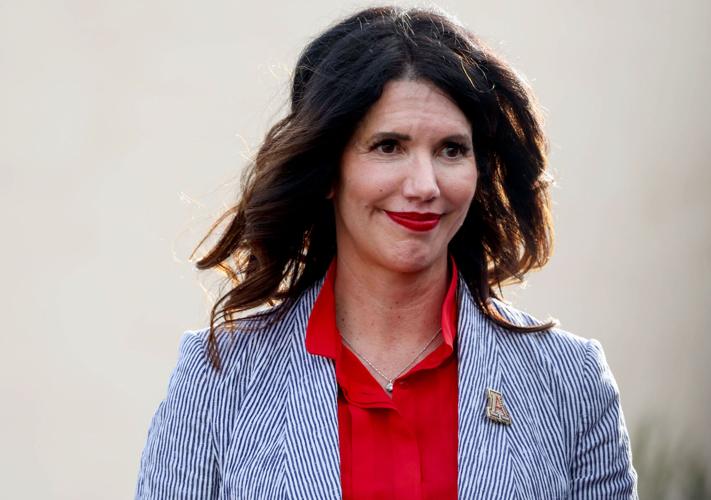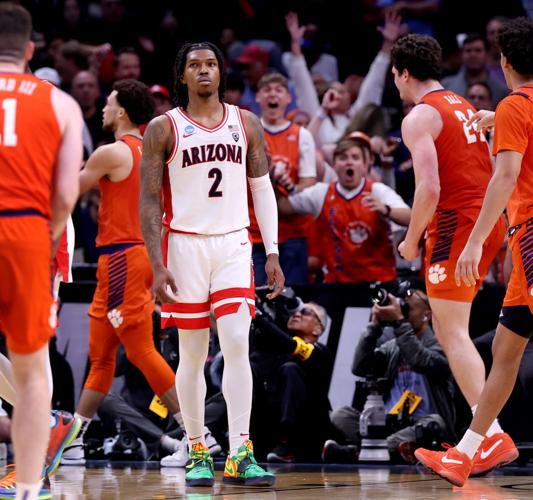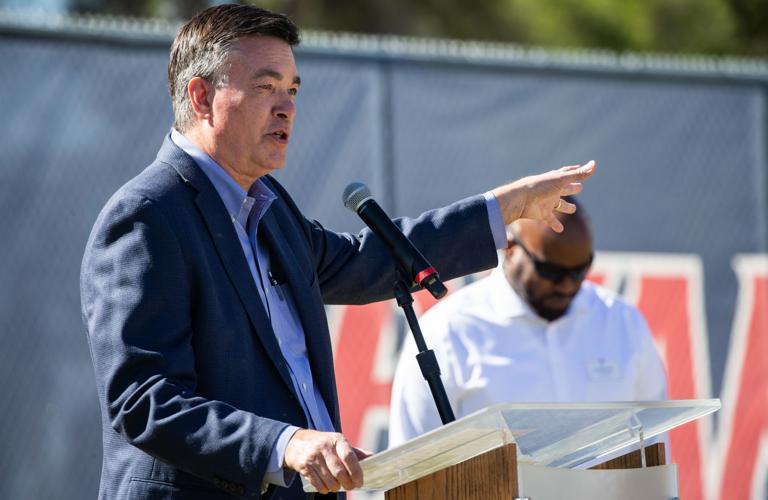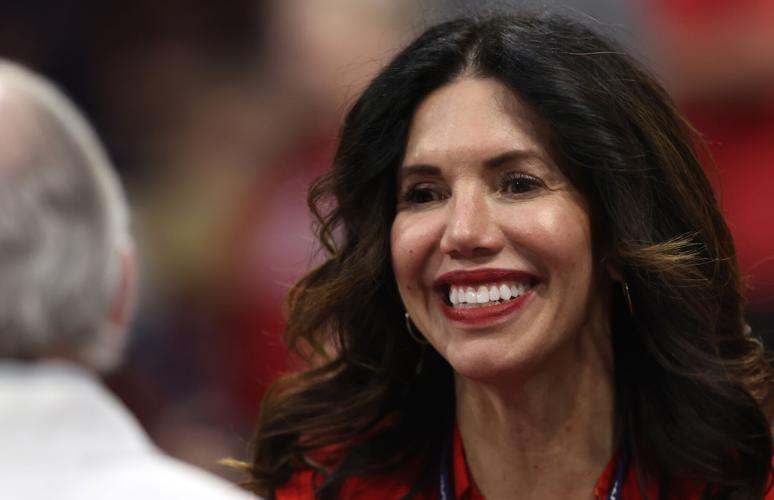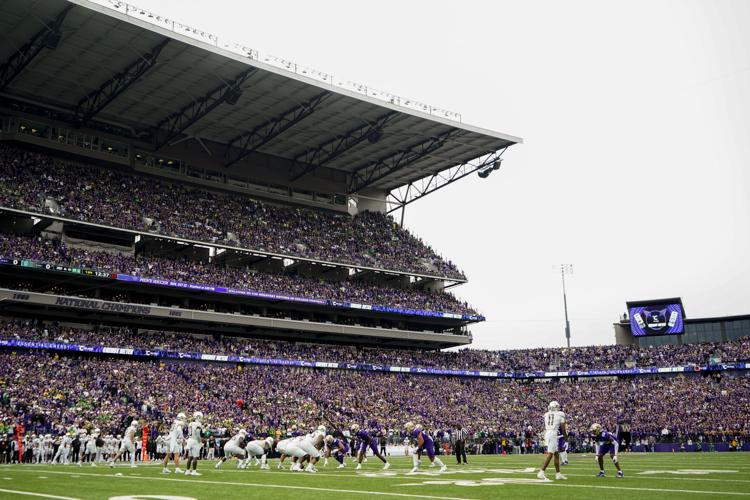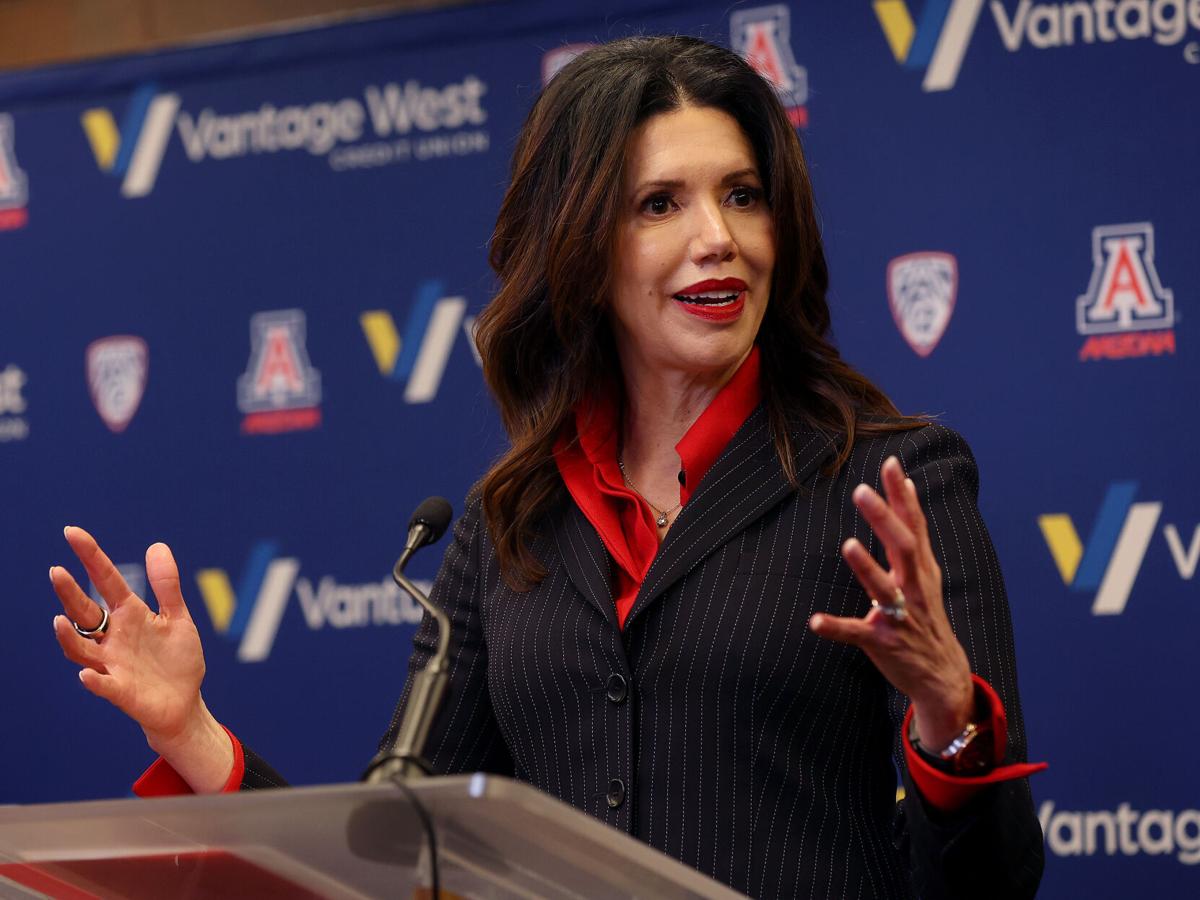Desireé Reed-Francois isn’t messing around.
Reed-Francois has been Arizona’s athletic director for just over 100 days. On the 109th day, she delivered what the UA is calling a “5-Point Plan to Strengthen Operational and Financial Accountability.”

Michael Lev is a senior writer/columnist for the Arizona Daily Star, Tucson.com and The Wildcaster.
In other words, this is how Reed-Francois and her staff are planning to get the athletic department out of debt and on course for sustainable prosperity.
She introduced the plan to the Arizona Board of Regents on Thursday afternoon in Flagstaff. A little over an hour earlier, the UA announced the creation of “Arizona Sports Enterprises” to manage its multimedia rights agreements and operations.
It’s all related. And kind of confusing — especially for those of us who are more versed in balls and strikes than dollars and cents.
Reed-Francois deftly operates in both worlds. We spoke by phone after her ABOR presentation, and she provided some clarity on the changes that are forthcoming.
Here are five questions — and answers — about the 5-Point Plan:
What is Arizona Sports Enterprises, and how could it help the UA get out of the red?
For about 15 years, the UA has partnered with a third party — Learfield IMG College, commonly referred to as Learfield — to handle its multimedia rights (everything but network TV, basically). When he goes to a break on a radio broadcast, you’ll hear Brian Jeffries say something to the effect of: “You’re listening to Arizona Wildcats basketball, presented by Learfield IMG College.” He’s referring to that third-party entity.
Learfield lists more than 150 university and conference partners on its website. The main benefit of working with Learfield is guaranteed revenue. For Arizona, that’s been about $7 million a year.

Athletic Director Desireé Reed-Francois speaks to guests during the dedication of University of Arizona's William M. 'Bill' Clements Golf Center at Tucson Country Club on April 18.
But in a 49-page report prepared by Ernst & Young LLP that examines all aspects of the UA athletic department’s operations, multimedia rights were cited as a potential growth opportunity. Per EY’s recommendation — and based on the success of a handful of other schools — Reed-Francois decided to bring the multimedia operation in-house. Thus, the formation of Arizona Sports Enterprises.
“I’d rather bet on ourselves,” Reed-Francois said. “I’d rather make sure that we have a continuum of service — that we can integrate our corporate sponsorships with our philanthropic asks and make sure it’s all seamless.”
I asked Reed-Francois to provide an example of how that might work, and you could tell she was excited about the possibilities.
“Someone could be a donor of ours and own a company, and they want to have a twofold contribution. Actually, it could be threefold,” Reed-Francois said. “They could be giving to the University Foundation. They could be giving to the Wildcat Club. But they also have a business that they want to partner with us ... to co-brand their company with Arizona Athletics. They want to use our marks and have a commercial.
“And think about the fourth opportunity in terms of name, image and likeness. There’s some really interesting opportunities there.”
While acknowledging startup costs — Arizona already has hired two new employees to run ASE — Ernst & Young suggested that with an in-house model, “Arizona Athletics would trade the predictability of a revenue guarantee for the ability to capture larger payouts from the value of its brand over the longer term.”
Its “conservative” estimate of net revenue over the next 10 years shows an increase of about $2 million annually. Its “optimistic” estimate shows net revenue eventually climbing to about $18 million annually — more than double the current $7 million.
It’s also worth noting that, according to the report, Learfield took deductions during the pandemic that lowered the amount of revenue the UA actually received.
If this is such a potentially lucrative option, why don’t more schools do it?
Reed-Francois acknowledged a couple of realities related to the launch of ASE.
One is that it will require some patience.
“It’s going to take some time,” she said. “We’re not going to see, overnight, a doubling of revenue. This is playing the long game.”
The other is that it carries some risk. Learfield — which will continue to handle national sponsorships for the UA — provided both money and services.
“There’s a risk to any kind of entrepreneurial venture,” she said. “But these are changing times, and we have to look at things with a new, innovative lens.”
Schools that have taken their multimedia rights in-house represent a small minority. They include ASU, Clemson and Nebraska. Reed-Francois cited Clemson Athletic Properties — aka CAPCO — as a promising example.
“Clemson wanted to cut out the middleman,” she said. “I wanted to see how that was going to work, and it’s wildly successful.”

The celebrating crowd and Clemson players surround Arizona guard Caleb Love after the Wildcats gave up a basket and a foul late in the second half of their Sweet 16 game in the NCAA Tournament in Los Angeles on March 28, 2024.
Although dissatisfied with the ACC’s deal with ESPN, Clemson has been wildly successful in terms of building facilities and winning programs. UA men’s basketball knows this all too well. (Too soon?)
The UA shares a key trait with Clemson and Nebraska that could help make Arizona Sports Enterprises wildly, or at least moderately, successful: They’re all the only game in town.
Tucson has pro hockey (for now), indoor football and independent-league baseball, but the Wildcats always occupy the top spot on the marquee.
“The Tucson community loves the Wildcats,” Reed-Francois told ABOR. “The state of Arizona loves the Wildcats. We need to really make sure that we’re aligning that love with revenue opportunities and the ability to really brand the athletic department.”
She later described that dynamic as “an incredible advantage for us,” particularly as it pertains to procuring local corporate sponsorship deals.
How does this impact Brian Jeffries?
Jeffries has been the beloved “Voice of the Wildcats” for almost 40 years. Technically, though, he works for Learfield as director of broadcasting.
Reed-Francois said one of the first calls she made Thursday was to Jeffries to let him know about ASE and that the UA wants him to call games as long as he wants to do it.

Arizona is bringing multimedia rights in-house, and Brian Jeffries is expected to remain in his role as the Wildcats' primary play-by-play announcer.
“Unless you don’t want to be hired,” Reed-Francois said she told Jeffries, “our intent is to hire you for Arizona Sports Enterprises.”
“I called Brian specifically because I wanted him to know he’s part of the family,” Reed-Francois added.
It’s hard to imagine UA Athletics without Jeffries. I’d be shocked if this change ended that relationship or altered it in any substantial way.
What about naming rights?
Securing corporate naming rights also falls under the umbrella of ASE. More likely than not, the venues currently known as Arizona Stadium and McKale Center will have different names in the not-too-distant future.
Someone will complain if/when Arizona Stadium is renamed, despite it current name being as bland and generic as possible. McKale Center belongs in a different category, and its name should be protected. There might be a workaround, such as branding the court or tacking on a prefix or suffix (see Alaska Airlines Field at Husky Stadium).

A general view of Husky Stadium during the first half of a game between Washington and Oregon on Saturday, Oct. 14, 2023, in Seattle.
Reed-Francois also suggested the possibility of a naming-rights deal for the UA’s “athletic village” — i.e., all of its on-campus athletic facilities.
“I’m going to rely on my colleagues in Arizona Sports Enterprises to go out and be really aggressive on that front, and let’s see what that landscape looks like,” Reed-Francois said. “I don’t have a preconceived notion.”
Naming rights could bring in $1 million-$3 million annually, per the Ernst & Young report. The report lists several competitors’ agreements, including ASU’s 15-year deal with Mountain America Credit Union that’s worth about $3.3 million annually.
What is the point of all this, and how much will it cost fans?
Major changes are coming to the structure of college athletics. The expectation from the House vs. NCAA settlement is that revenues will be shared with student-athletes, to the tune of about $20 million annually.
UA executive John Arnold told ABOR that the school is “planning and preparing for athletics revenue sharing that is likely to come in fiscal ’26.” Reed-Francois told me that the 5-Point Plan and ASE are about “positioning ourselves for the revenue share that’s coming.”
Brett Yormark has taken several steps to position the Big 12 for what’s to come — including, quite possibly, selling naming rights to the league itself. Additionally, the NCAA is now allowing “commercial sponsor advertisements on football fields” for the explicit purpose of generating “additional income to support student-athletes,” NCAA president Charlie Baker said in a news release.

New Arizona athletic director Desireé Reed-Francois talks with UA president Robert Robbins just before Arizona tipped off against UCLA in the Wildcats’ final regular-season Pac-12 women’s basketball game on March 2 at McKale Center.
As far as Reed-Francois is concerned, revenue sharing is non-negotiable. Arizona is going to participate in it to the fullest extent.
“We are going to make that a priority, and we are looking at our entire model,” Reed-Francois said. “There is nothing off the table. That’s an expectation.
“We’re a national brand. For us to continue being that national brand, being that championship program that our community deserves, we are going to participate. And we will figure it out.”
It’s natural to assume that consumers will bear the brunt of at least some of these additional costs. The UA announced increased season-ticket pricing before Reed-Francois was hired, and the EY report cites ticket sales as another area of potential revenue generation.
Reed-Francois knows she can’t price out the common fan. She also knows she has to tap into every conceivable revenue source in order to survive and compete.
“We have the privilege of being a part of some people’s best memories,” Reed-Francois said. “Our intent is to look at everything top to bottom ... looking at every single type of our fan and making sure that we’re meeting their respective needs.
“This is not a one-size-fits-all. This is, how do we make sure that we’re meeting people where they are and continuing to provide those memories?”


